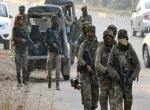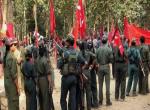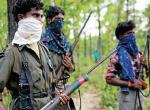Independence may have firmed up the geographic expanse of India but it failed to stabilise the ‘concept’ of India. Constitutionally we have taken our diversity seriously and the representative form of our democracy has further made our divisions of society even more relevant. It is therefore not surprising that India has been affected by, what can be called a chronic case of insurgency since independence.
From the uprising in Nagaland, Mizoram, Tripura and Assam in the Northeast to Punjab and Jammu and Kashmir in the North, challenges to the integrity of the country have been both real and unrelenting. However, none of the insurgencies have had the geographical or demographic spread anywhere close to Left Wing Extremism, something that we usually call LWE. While there are varying estimates of the influence of this contagion the most realistic estimate was given by Home Minister in September 2009. He had then acknowledged that Maoist influence extended over 2000 police stations in 223 districts across 20 states. Adding to the bigger picture he admitted greater violence in areas under 400 police stations in 90 districts of 13 states. In terms of various government estimates and priority schemes 34 of these districts have been identified as the most affected by Naxalism. An estimate of the demographic influence of the challenge indicates its impact on over 40 per cent of the country’s area and 35 per cent of its population.
To give a comparison will highlight the expanse of the problem being faced. Jammu and Kashmir represents just one per cent of the country’s population even if one includes areas not affected by militancy. Even the four most insurgency afflicted states of the North East namely Assam, Nagaland, Manipur and Tripura represent a mere 3.3 per cent of India’s population. In terms of the geographical spread, Jammu and Kashmir and the four states of the Northeast represent 6.7 and 3.8 percent of the country’s area. The challenges of expanse and population are enough to indicate that capability and resources that we need to commit. Geographically the expanse of LWE is a connected space and it is for this reason that it is called a Red Zone Corridor. The status may be different in each State but we cannot tackle it in parts. Maoists claim to be an international phenomenon which has manifested itself violently in India. Tackling it in a manner that defines the different domains of State and Central executive function is utterly naïve, to say the least.
Background
It will only be stating the obvious if one was to analyse the malaise with the assumption that extremism of any kind is bad and LWE seeks to challenge the very concept of India. We need to however remember that ideology of any kind emerges from the fault lines in a society. It basically seeks to correct these faults. Ideologies of Marxism, Leninism and Maoism are manifestation of this. Marxism sought to correct a class struggle between the haves and have-nots. Mere birth in a particular class bestowed an entitlement of comfort on one end of the society and penury and labour without any hope of any future of improvement at the other end. There was nearly no middle class at that time. The concept of bourgeoisie and proletariat classes was central to this fundamental ideology. Leninism was based on the problem of imperialism while Maoism emerged from the peasantry as a continuous need for a resolution. One would notice that such problems in the Indian society continue even to date, although the severity may not be the same across India. Equality of opportunities may be fundamental to democracy but the reality is that traditional divide also continues. Therefore one sees an evolutionary flaw of the society. It is a fairly natural process of evolution from tradition to modernity. Concluding that force application can overcome the challenge is therefore a faulty premise. It is a social problem essentially.
Accentuation and perpetuation of the problem is also because of criminality and corporate greed mange to use the problem for their own selfish profits. The social problem therefore only grows instead of improving as part of the developments efforts that involve business and financial interests. The Maoists not only have a strategy but have well thought out tactics as well. The monetary gains that emerge from their strategy find many fellow travellers. These include illegal traders, drug traffickers, mining mafia, or local politics. It is all of them who benefit from insecurity and acts of kidnapping and extortion. China and Pakistan will only increase their involvement in these troubled waters.
Ideological Veneer of Greed
It cannot be denied that the challenges we face on the internal security front arise partly as a consequence of the unevenness of our growth processes, the inequities that remain in our social institutions and the shortcomings sometimes of our political institutions. There may be other more complex issues like language, ethnicity, caste or religion or cultural rights. In this complex world, that we live in, all these facets have to be taken into account in evolving a concerted and effective strategy to counter these challenges.
Naxalism in India has been debated as an ideological moored phenomenon. The current status is far from this. There are three major factors that will dispel this myth. Firstly, if it is a class struggle as it is made out to be, how is it that the leadership of the movement as also in each State comes from the traditionally higher castes and from the educated lot. Secondly, is it not surprising that States with mineral wealth that can actually empower the growth of India and alleviate poverty are the most afflicted. If mining and natural wealth is brought under the revenue stream and is properly managed, it actually helps the poor. In an ungoverned environment, it is only the selfish and powerful who prosper. Protection money and kangroo courts are a sign of the people being ‘misled’ and not ideologically motivated. Such problems are outright acts of extremism and terrorism for which there can be no space in a democratic polity. Extortion is the main source of income and wealth that compensates for the risk involved in remaining with the movement indicates the myth that is being spun around the movement.
A democratic government has to distinguish between the genuine and legitimate expression of dissent and disaffection and the manifestations of anti-national, anti-social and anti-people threats to our democratic way of life. Often these challenges also arise because we are an open society and have allowed free expression to dissent of varying degrees. This is not our weakness. This is our strength. But in this also lies the challenge that we need to deal with and grapple with effectively. State governments must recognise these different facets of the security threats we face and develop effective policies designed to address them.
Genesis
Some important aspects need to be highlighted. Whether Naxalbari was the start point of the movement in India or whether formation of the Communist Party of India (Marxist) was responsible for it has little relevance. The focus of the movement is more important.
The history of LWE in India goes back to the 1960s. However, the 2004 merger between two erstwhile outfits, the Maoist Communist Centre (MCC) and the People’s War Group (PWG) leading to the formation of the Communist Party of India-Maoist (CPI-Maoist) is largely described as the watershed point of graduation of the movement to a violent campaign. It was once described as active in one third of India’s geographic expanse. The movement has claimed 10000 lives between 2003 and 2016 itself.
Organisationally the Maoist have a well established hierarchy with a Politburo, a Central Committee, and Regional Bureaus which further run down to sub-regions, districts, areas, villages and an amorphous groupings known as Sangham. These are geographically spread all over India. In terms of an overall design, Maoists wish to first consolidate in their various base areas, then enlarge it into guerrilla zones and finally challenge the State Government by establishing pockets of Liberated Zones. Having generated adequate public support, the plan is to actually cause open conflict and hold centres of State authority to ransom. The so called urban islands under siege.
In an overall perspective, the trajectory of Naxalism has seen growth from a peasant uprising that gravitated towards an ideology and generated into a mass movement. Commercial exploitation was a natural fall out. If we move away from ideology and look at fundamentals of their objectives, it will be noticed that they primarily seek to discredit the state authority. The aim is to highlight their inability to govern, create a sense of insecurity and make the Government commit exceptionally high level of resources on security. This is obviously at the cost of economic upliftment and therefore conditions in the society continue to remain where they were. It suits the Maoists entirely.
A question which arises is about the quality of their leaders as also their cadres and what is the unifying link between the two. As already mentioned, there is a wide gap between the leadership and the cadres. The leaders are educated, belong to upper economic strata, are fairly old and are by and large non-local. The cadres are quite the reverse. As an example, majority of the central committee members are from one district and fifty percent of top leadership in Andhra Pradesh is from one region alone.
The Maoists are not by themselves. A revolutionary internationalist movement exists and forms a kind of hub to coordinate all the trouble creators of India. Weapons, training, shelter and international connect gets facilitated through this nexus.
Current Status and Future Trends
Prognosis for the future cannot be defined generically but has to be seen specifically in each State of India. The LWE has formed a complete corridor in India with varying effect in each State. Geography or physical attributes including resources have much to do with the spread of extremism. Terrain is an important aspect.
Andhra Pradesh and Telengana are parts of the Deccan Plateau that can be regionally considered as Telangana, Rayalseema and the Coastal belt. Conflict and friction is on the decline here. The model adopted by the State Government has so far been successful. The current state of turmoil due to acceptance of Telangana demand has increased the scope for violence and challenged the status of comparative peace. Is it not surprising that the Telangana movement provided traction to the conflict and yet, its very acceptance has instead provided the cause to revive the conflict. After all, the core leaders are from Andhra and they still dominate the Naxal organisation.
Jharkhand is a part of the Chota Nagpur plateau and is endowed with forty percent of the nation’s mineral wealth. The terrain and the riverine boundaries are conducive to the sustenance of conflict. Considering that it contains forty percent of the country’s wealth, mala fide commercial interests seek to sustain the trend of turmoil. Friction continues and contest for the population remains. There is a large cadre base but these numbers also cause local leadership competition. Splinter groups have therefore come about and inter group rivalry incidents have been reported.
Odisha is impacted because of its boundary with four states. With 75 percent of its area covered with hills or ghats, the problems are obvious. In 2008 the Police Training School was raided and the district armoury was looted. The district police station of Nayagarh was also raided. Since then the situation has somewhat improved. The per capita income disparity in the rural areas is another cause of the problem. Odisha is a sort of link State. It provides a link to the Maoist Zonal Committees. Dandakaranya-Bihar-Jharkhand, and Andhra Pradesh– Odisha Zonal Committee Zones of the Maoists thus get linked. The level of violence in Odisha depends on the status in the other two zones. Pressure in other States will increase the level in this State and vice-versa.
Bihar is a State with a border with Nepal and a huge inter-caste rivalry. The criminal elements are the pseudo associates of Naxal organisations. It is therefore not surprising that the activities are predominantly based on arson and kidnappings.
West Bengal is also connected to Nepal, Bangladesh and Bhutan. The relevant issue is that it can provide a pool of educated youth and this is the State from where the movement is said to have started. While the situation seems to have stabilized but the lines between politics and extremists are blurred. The exact cadre strength cannot therefore be assessed. It has a sub- surface potential which can be exploited at any time.
Maharashtra shares its boundary with six states and districts of Gadchiroli and Gondia have a huge disparity in per capita income. The interconnection with other effected States allows the movement to retain its violence. Inter-state boundary issues provide an excuse to sustain the movement through local causes.
Chattisgarh State shares its borders with six other States. The fact that rivers define some State Boundaries and bridges over them are nearly non-existent, leads to problems that emerge from unchecked interstate movement. The perspective of the overall LWE situation and the connect to the Dandakaranya region is also important. This region includes Bastar and Gadchiroli districts. Chattisgarh is in a situation of continued friction. The contest continues and the balance has not stabilized, especially because when Governance appears to be winning, some major incident takes place to alter the balance. The incident when prominent politicians were killed is an example of this syndrome. It was neither the worst incident of man slaughter by the Maoists, nor did it constitute the first ever attack on politicians. However, it was for the first time that the extremists had managed to annihilate a number of prominent politicians in a single attack. The incident generated intense media attention.
The attack carried out on the convoy did not constitute a significant military victory for the CPI-Maoist either. The motley of security force personnel, mostly personal security guards protecting some of the leaders either ran out of bullets or were overpowered by the numerically superior adversaries. Neither did the attack advance the Maoist objective of capturing state power. The attack took place in an identified extremist stronghold and did not demonstrate an audacious outreaching capacity into an area devoid of Maoist influence. Media attention eventually forced the State into a strategy which was not in keeping with an integrated approach which was in current practice.
The essential point is that the Dandakarnya region of the Maoist is their strategic fulcrum that decides on the momentum of violence. It consists of seven districts of southern Chhattisgarh including Bastar as well as the Gadchiroli district of Maharashtra. It is not surprising that the largest number of divisional committees, eight of them, exist here. The highest aggregate armed strength of two battalions and ten companies of People’s Liberation Guerrilla Army (PLGA) also operate here. The terrain and border fault lines are to their advantage.
Over the last few years, the security forces have gradually increased their presence and activities in this area. The levels of violence and recruitment by the Maoist has consequently decreased. There are desertions as well. The Maoists have however, continued with militarization and are attempting to extend and consolidate further in Western Odisha. This will provide them with additional options if Bastar becomes vulnerable. Any pressure brought through disproportionate application of force will therefore create problems in other States. A long term plan that stays its course is therefore important. Let us now come to the core issue of military and soft power application.
Alternatives
Force application or employment of the military is often offered as a solution to the problem. One must realize that this problem springs from issues that relate to governance, ideology and social evolution. If this is so, Army is least suited for this task in a democratic country. While there is no doubt that the problem is primarily about social integration, there is still a fundamental debate about what takes priority in our approach towards this challenge. Should it be ‘governance’ or ‘development’?
People First or Credible Administration First
The Ministry of Home Affairs feels that funding for the Integrated Action Plan (IAP) should be routed through the normal civil administration channels. In the Ministry’s opinion the basic requirement is to establish the credibility of the administration and improve governance. Ministry of Rural Development on the other hand feels that alienation of the people needs to be bridged before anything else can be attempted. The argument offered by this Ministry is based on the premise that involvement of the people is mandatory in any activity. The Rural Development Ministry insists that all central funding including that related to the IAP should be routed through the Panchayati Raj set up. Their firm view is that Ministry of Panchayati Raj and Tribal affairs should be the prime mover. Both these arguments have their merits but even with regards to development there are different views.
Clear, Hold and Develop
In a country as diverse as ours, no solutions can be applied across the board. Solutions have to be specific to a situation. In terms of LWE, a somewhat broad categorization can be made. This will provide some classification of the situation. On one end of the spectrum are the ‘Base Areas’ where government administration has not been able to make any inroad. The Maoists by and large exercise power over the people of these areas. On the other extreme are unaffected or least affected areas. Here, the administration is in full control. In between these two areas various shades of fringe areas and stabilized or moderately affected areas exist. The strategy obviously has to be based on expanding the stabilized areas and move towards the Base Areas dominated by the Maoists. This can be done through better security and infusion of development gradually. Once the footprint of the administration increases, the hold of the Maoists will automatically diminish.
Unfortunately, the contest is not so easy or as simple. Maoists know that development of any kind means loss of ground and loss of constituency for them. The Maoists have therefore destroyed schools, offices of local self-government institutions, roads, and mobile phone towers. This is a part of their asymmetric warfare. Their aim is to deny space to the administration. In this battle to ‘Win the Hearts and Minds’ a combination of security and development has to be adopted. The strategy should be based on ‘Clear, Hold and Develop'. The success of this strategy is varied. In a ‘win some- lose some’ situation, the proportion of money that is wasted in this contest is substantial. Categories of people who benefit will want the situation to perpetuate.
Challenges of the Development Model
The development model is obviously a tedious and costly one. This is specially so in what are said to be the Maoists Base Areas. In fringe areas or moderately affected areas, the contest is very slow but it has to be kept steady. In essence it is a very long drawn and slow battle which is painful in terms of effort and also casualties. Success lies in keeping a permanent focus in every small thing that we do. Quest for quick results will be a flawed approach.
In contrast to the development model, the force-centric approach has many takers. Due to the fact that most of India's previously perceived Counter- Militancy or Counter-Insurgency Operations in Punjab, Mizoram, Tripura and Andhra Pradesh have succeeded through security force operations, this model has its ardent supporters. This includes the official as well as strategic circles. The development model, on the other hand, is perceived as tedious, costly and liable for disruption by extremist violence. However, there is a need to remember that political intervention and socio- economic integration brings about a more lasting change. The cost of stand alone security operations in Punjab are well known.
Role of the Army
There is a whole range of aspects that our present set up needs to learn about. But to ensure that we bridge the gap between the doers and beneficiaries, the first wall that is required to be breached is about claiming credit or ownership. One needs to remember that ‘ideas’ which get implemented and gather momentum are those which do not carry an ownership tag.
The most appropriate role for the Indian Army is that of an ‘Enabler’. The present setup of Police and Civil Administration has an orientation only towards maintenance of ‘Law and Order’. They, including the top police hierarchy, are not equipped both in terms of capability or orientation to a problem like the LWE. If our present set up is incapable, then who is it that can enable them. It is obviously the military or the Army in specific.
Army can help in institutionalization of training for Counter-Insurgency and Counter-Militancy operations. This will include modified weapon handling, small team operations and countering IEDs. Development of a swift and automatic response is essential. For this the forces need to absorb the complete intelligence cycle and learn to handle intelligence unobtrusively. Similarly, communications during operations while maintaining surprise at all times is fairly alien to the existing method of operations. The Army has much expertise in all these areas. If can infuse this power, one may call it hard or soft power, but this is what will actually help in winning our battle against any kind of extremism.
The mere presence of the Army in any area exerts its own power. Our cantonments and training institutions should think of such extremism affected areas in their expansion plans. This will be a contribution by itself.
Summary
To summarise, some issues need to be emphasized:-
a. The Maoists are not by themselves. A Revolutionary Internationalist Movement exists and it forms a kind of hub to coordinate all the trouble creators of India. Weapons, training, shelter and international connect gets facilitated through this nexus. The terrain and border fault lines are to their advantage. The monetary gains that emerge from their strategy find many fellow travellers. These include illegal traders, drug traffickers, mining mafia, or local politics. It is all of them who benefit from insecurity and acts of kidnapping and extortion. China and Pakistan will only increase their involvement in these troubled waters.
b. In a country as diverse as ours, no solutions can be applied across the board. Solutions have to be specific to a situation. The strategy obviously has to be based on expanding the stabilized areas and move towards the Base Areas dominated by the Maoists. This can be done through better security and infusion of development gradually. Once the footprint of the administration increases, the hold of the Maoists will automatically diminish. In this battle to ‘Win the Hearts and Minds’ a combination of security and development has to be adopted. The strategy should be based on ‘Clear, Hold and Develop'. The success of this strategy is varied. In a ‘win some-lose some’ situation, the proportion of money that is wasted in this contest is substantial. Categories of people who benefit will want the situation to perpetuate.
c. The Force Centric approach has many takers. Because most of India's previously perceived Counter-Militancy or Counter-Insurgency Operations in Punjab, Mizoram, Tripura and Andhra Pradesh have succeeded through security force operations, this model has its ardent supporters. This includes the official as well as strategic circles. The development model, on the other hand, is perceived as tedious, costly and liable for disruption by extremist violence. However there is a need to remember that political intervention and socio- economic integration brings about a more lasting change. The cost of such standalone force centric security operations in Punjab are well known.
(The author is a former Defence Secretary and Governor of Chattisgarh State)
Image Source: http://www.indiatimes.com/news/india/india-is-the-fourth-worst-affected-country-by-terrorism-maoists-the-biggest-threat-261826.html










Post new comment